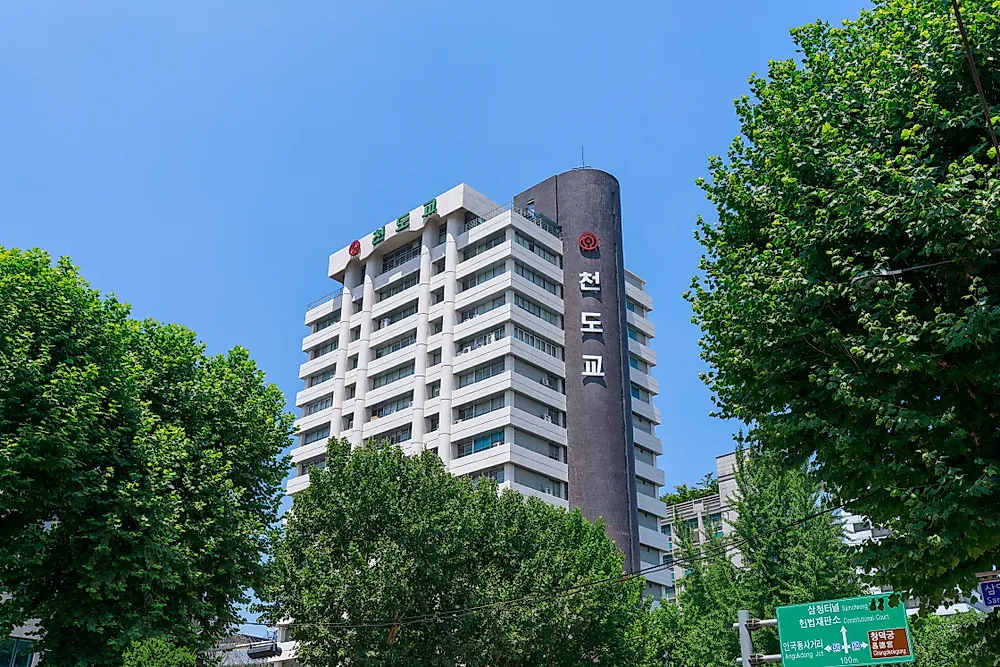Cheondoism (Chondoism): Beliefs and Origins

Cheondoism, also known as Chondoism, is a relatively young religious movement that surfaced in Korea during the 1900s. It has its roots in the 1860s Donghak movement which focused on Eastern learning as a way of rebelling against Western learning.
Followers of this religion believe that all life was generated by a God that is in all things. This God-like presence within all living beings is also compared to Heaven, the ultimate in goodness. The sacred text is called the Great Sacred Scripture and contains the commandments in the word of the Hanulnim (the Master Heaven within all living things). Followers believe that improving the self, brings one closer to Heaven and that this earthly existence can be converted into a paradise. The religion has, over time, adopted some of the central ideas from Taoism, Buddhism, and Christianity.
2. Global Presence and Notable Practitioners
Notable followers of this religion include Jeon Bongjun, the founder of the Donghak movement. He helped to organize farmers in the late 1800’s to revolt against high taxes and to retrieve property that had been taken on unsubstantiated claims. Son Byong-Hi is another important member in Cheondoism. He joined the Donghak movement in his younger years and later became the commander of the Donghak Peasant Revolution. Additionally, he united several religions together during Japanese colonialism to fight for independence.
The vast majority of its followers are located in North and South Korea. Estimates suggest that there are 1.13 million followers in South Korea with around 280 churches for attendance and as many as 2.8 million in North Korea.
1. Development and Spread of the Faith
This faith was able to spread throughout the Korean Peninsula due to its affiliation with the peasant rebellion. People of indigenous descent were tired of being oppressed by outsiders (Japanese and Christians). Joining the Donghak movement was seen as a solution to their problems. When Cheondoism was later founded, its followers found community in their shared desire to improve their quality of life.











